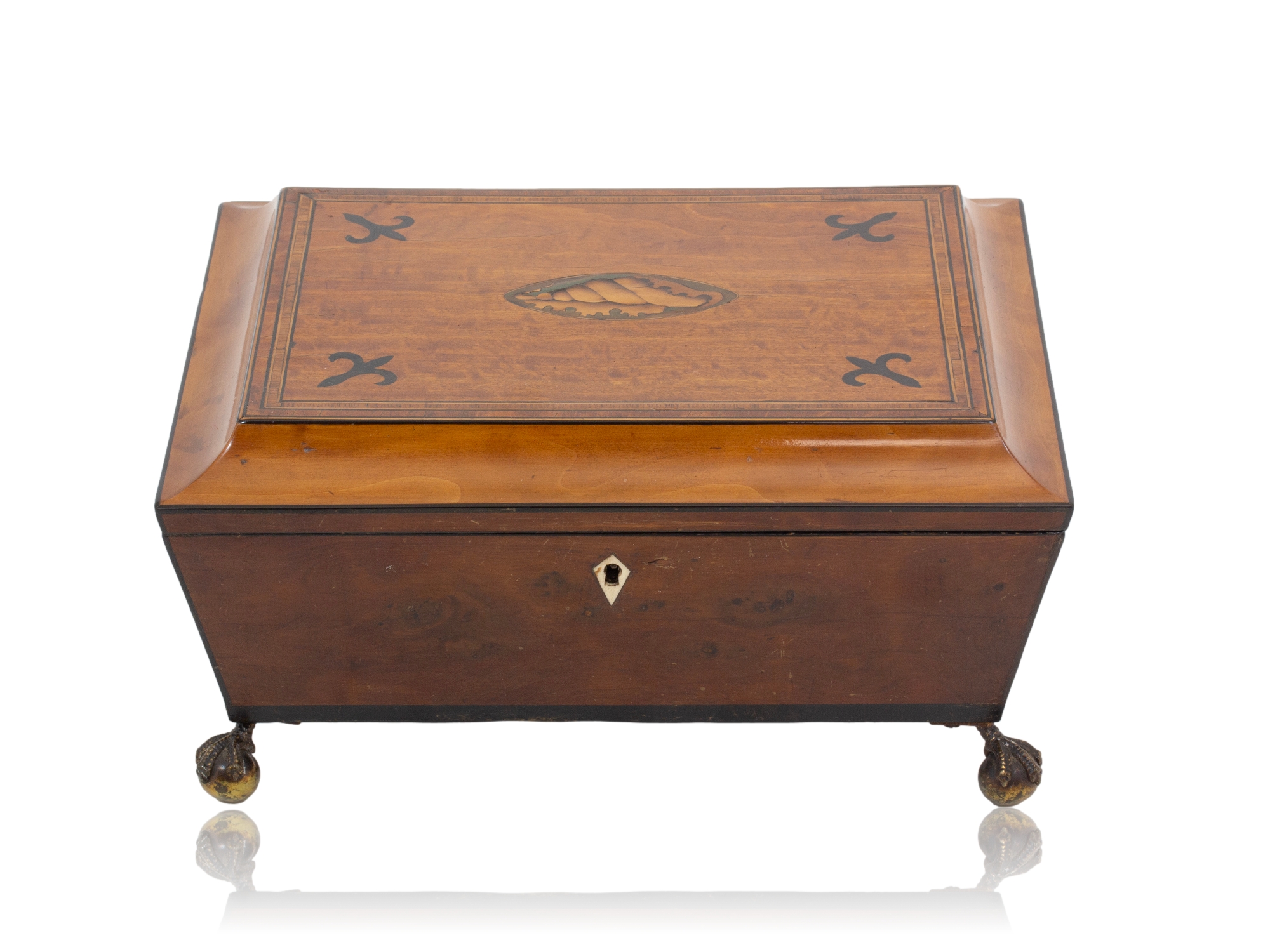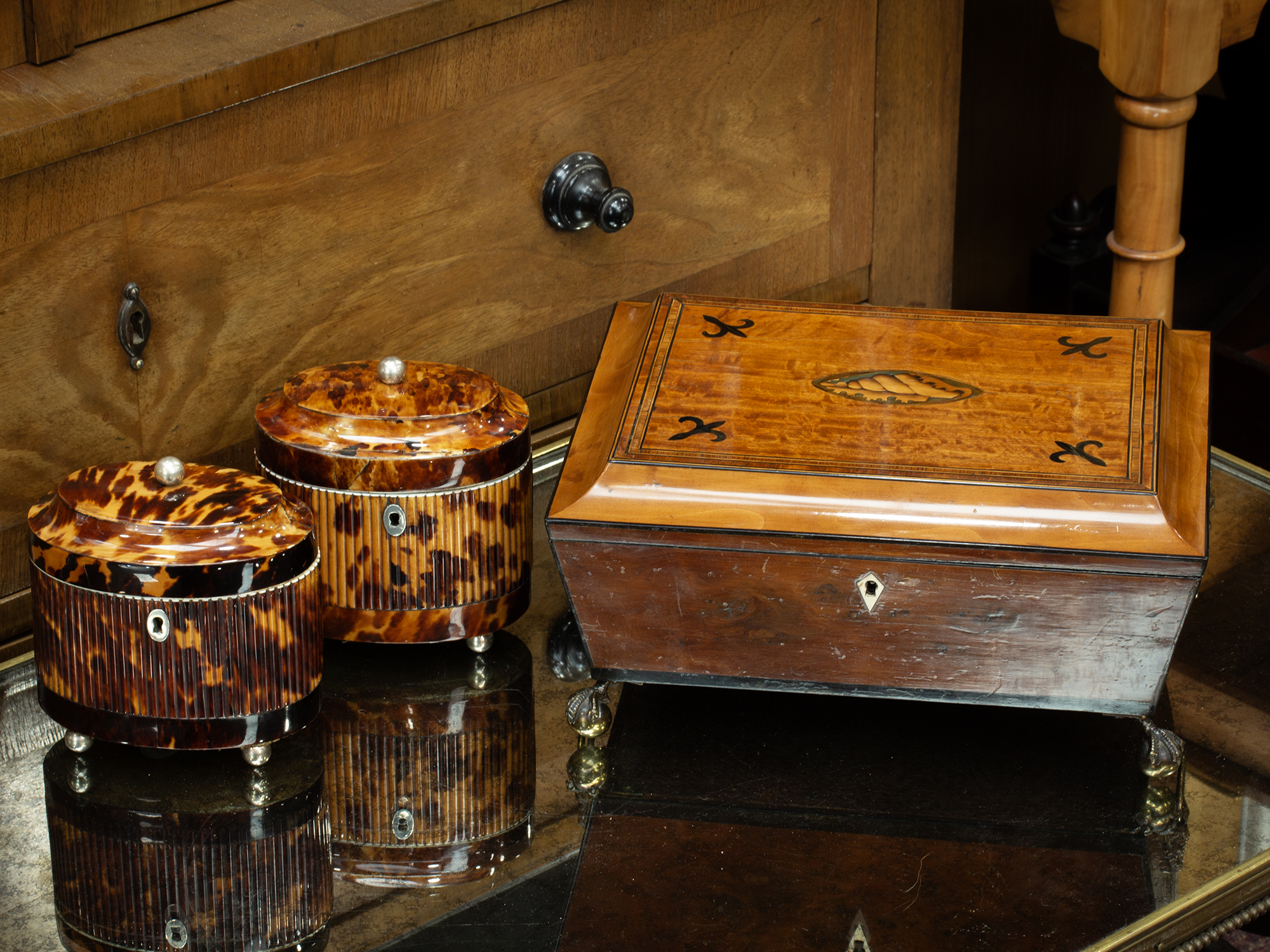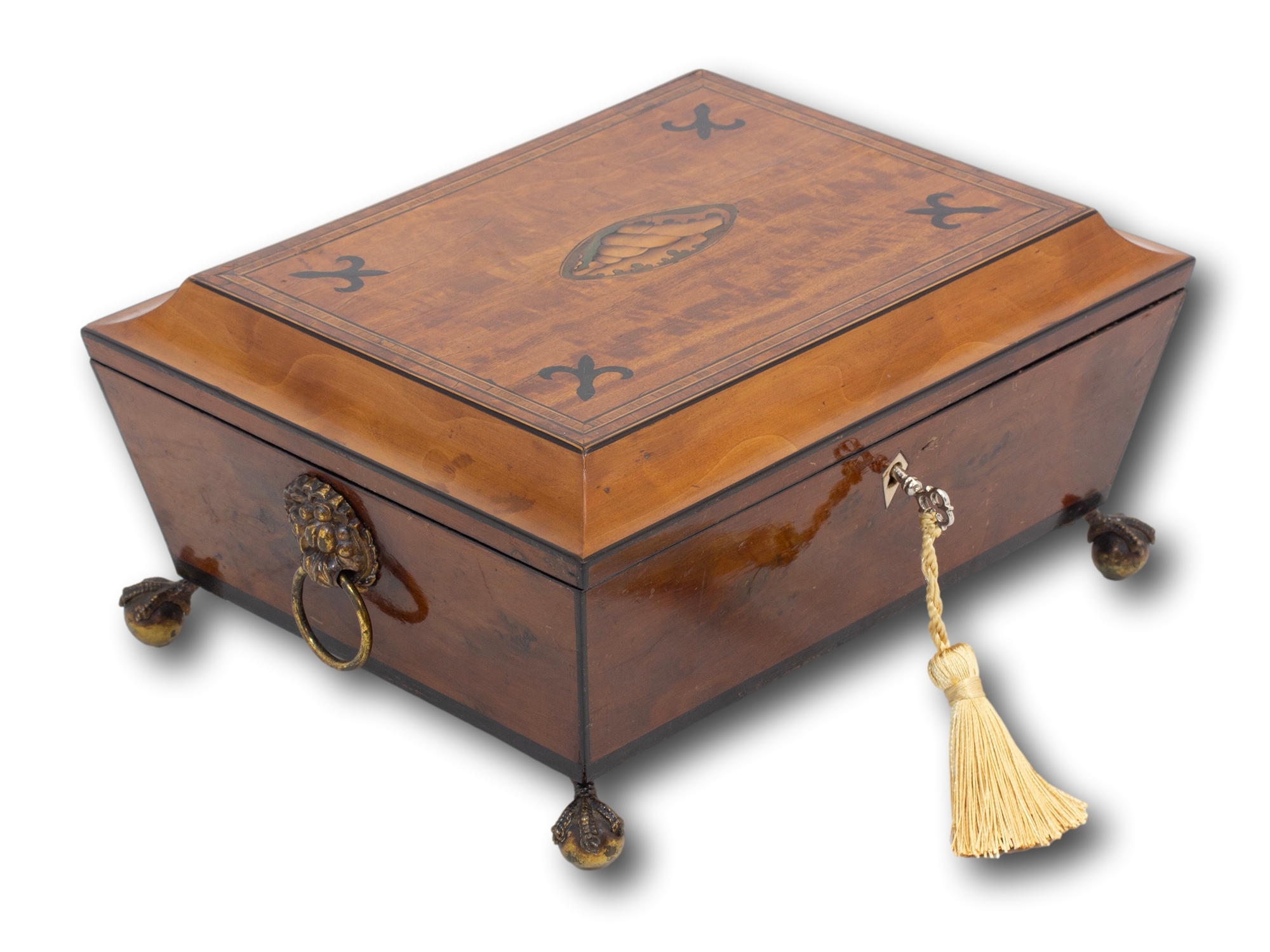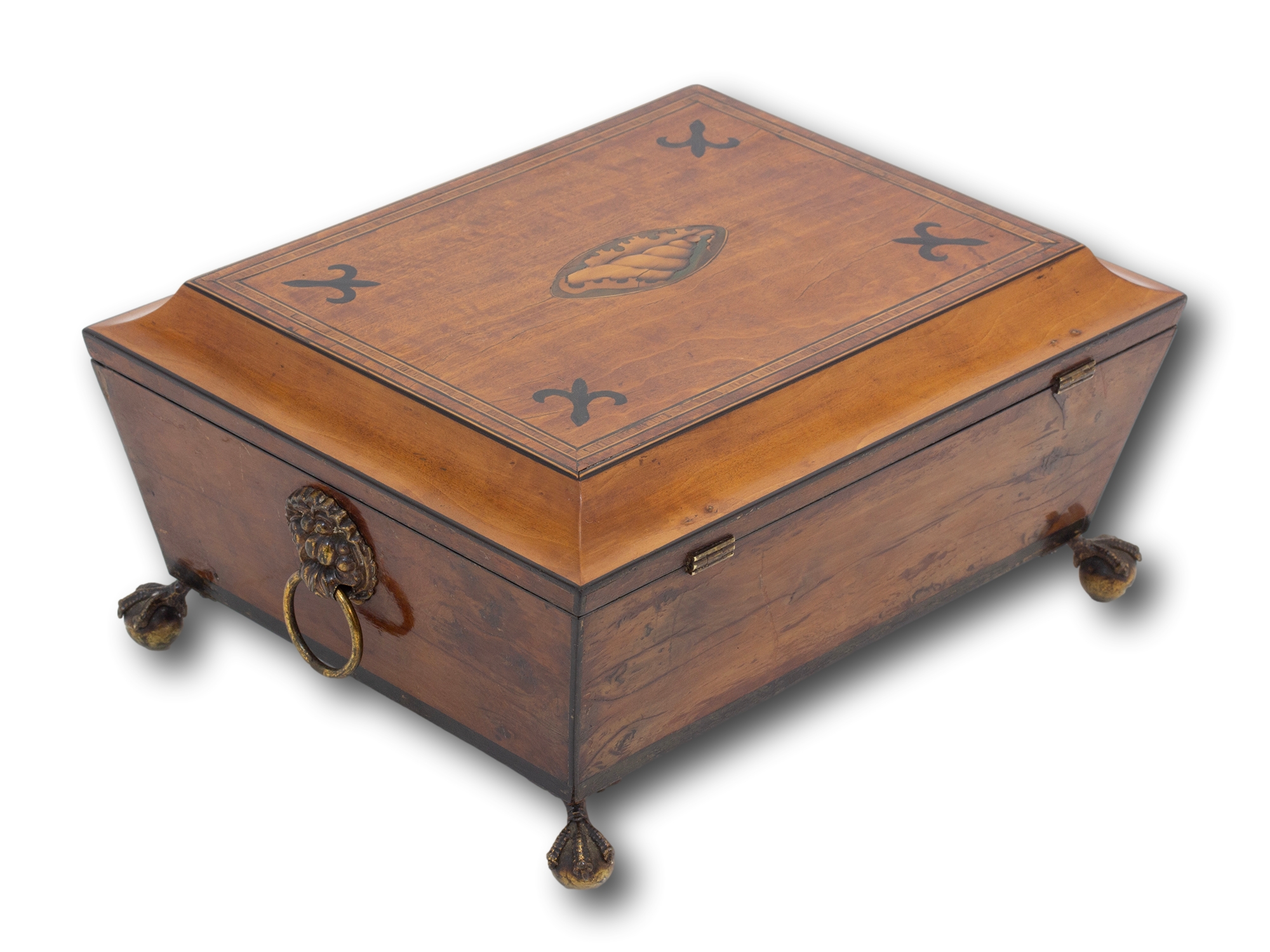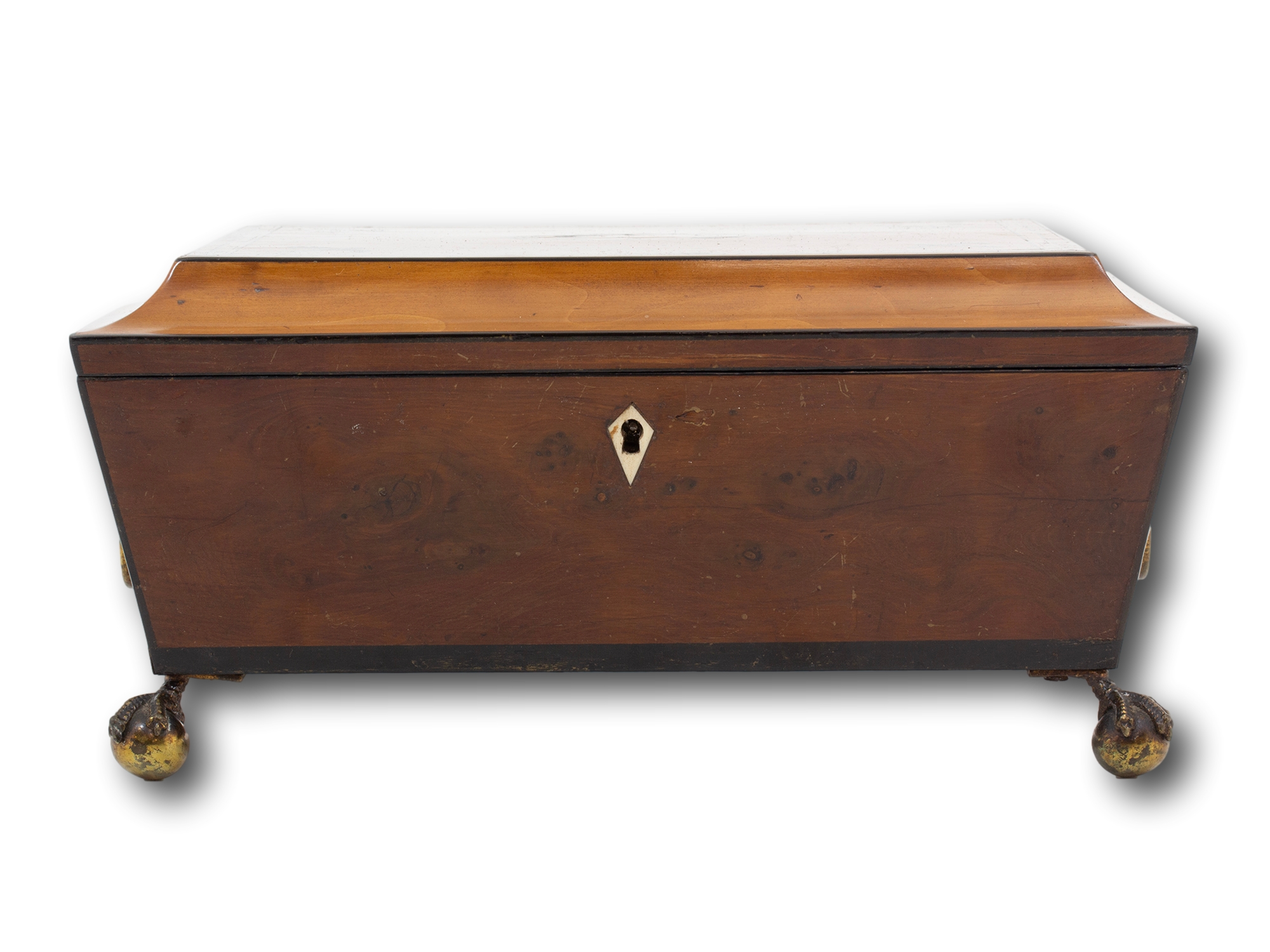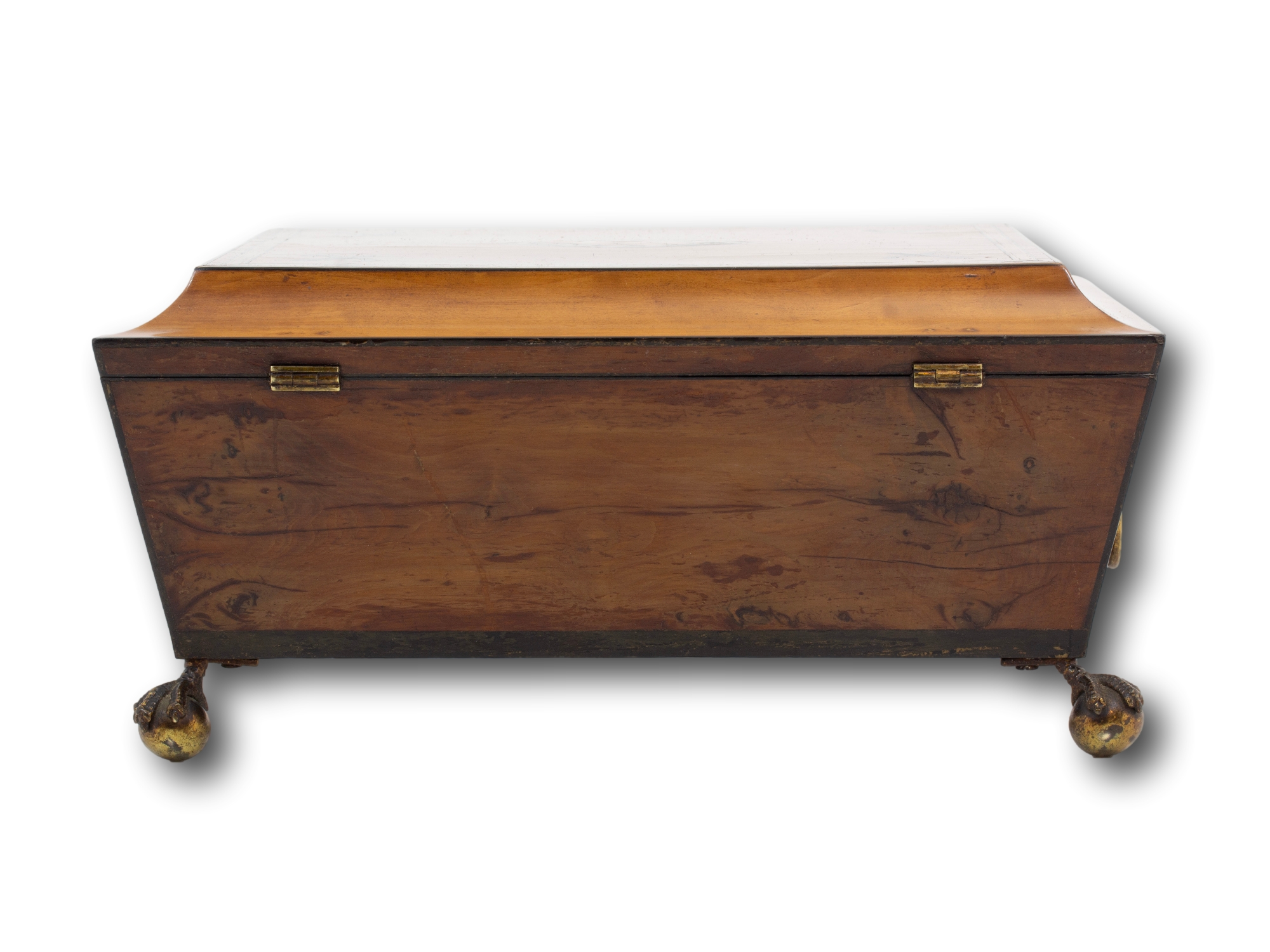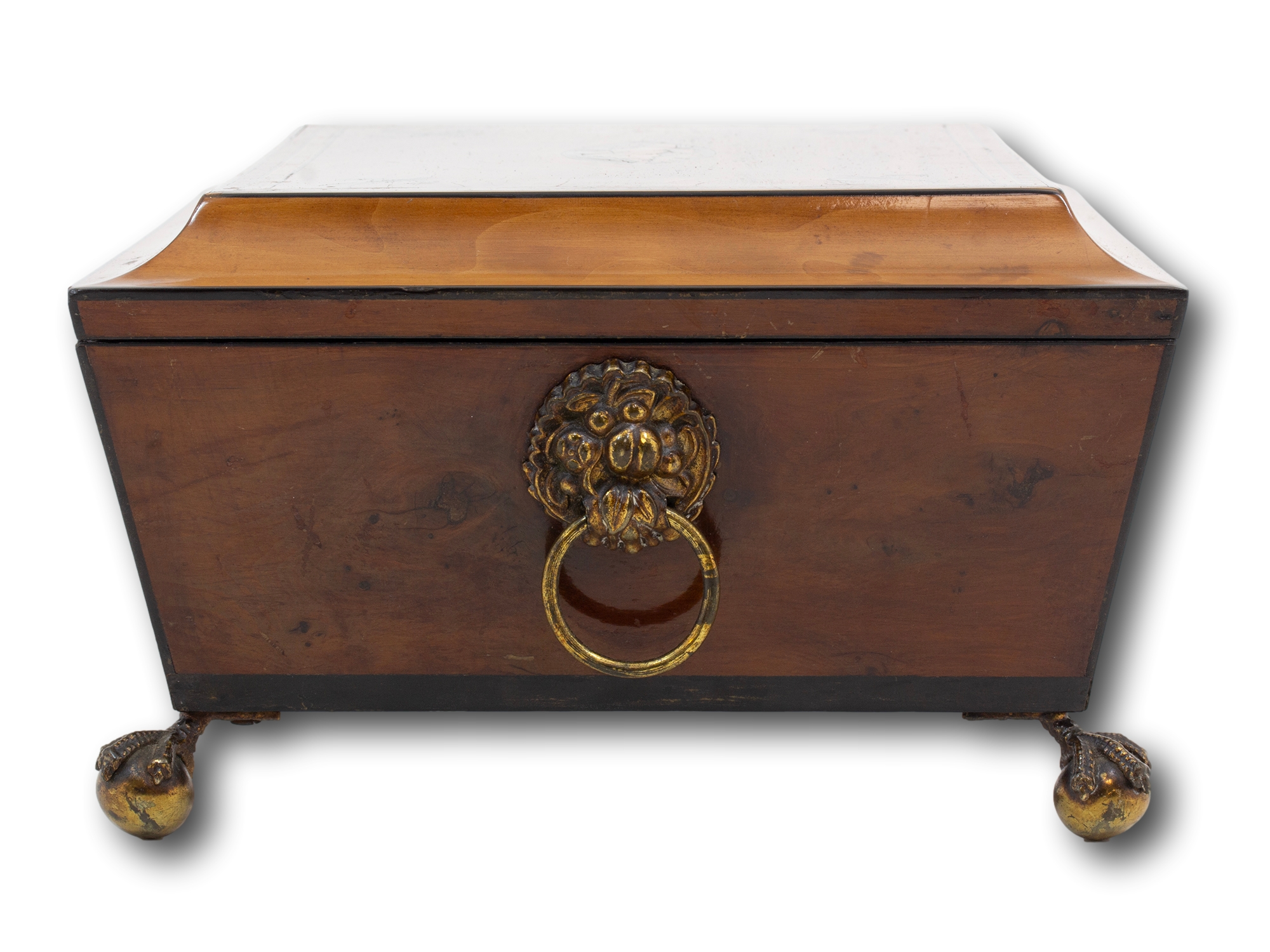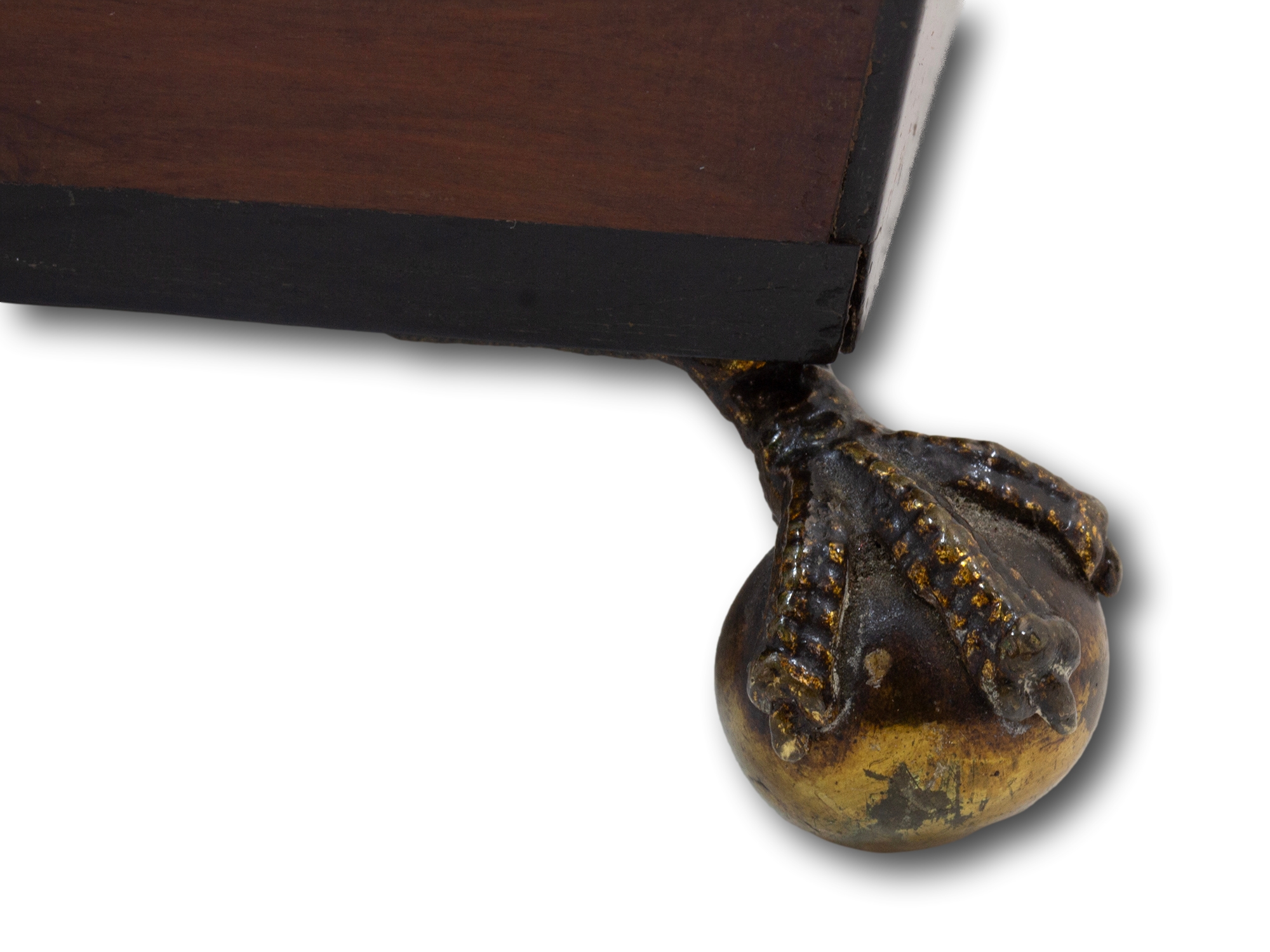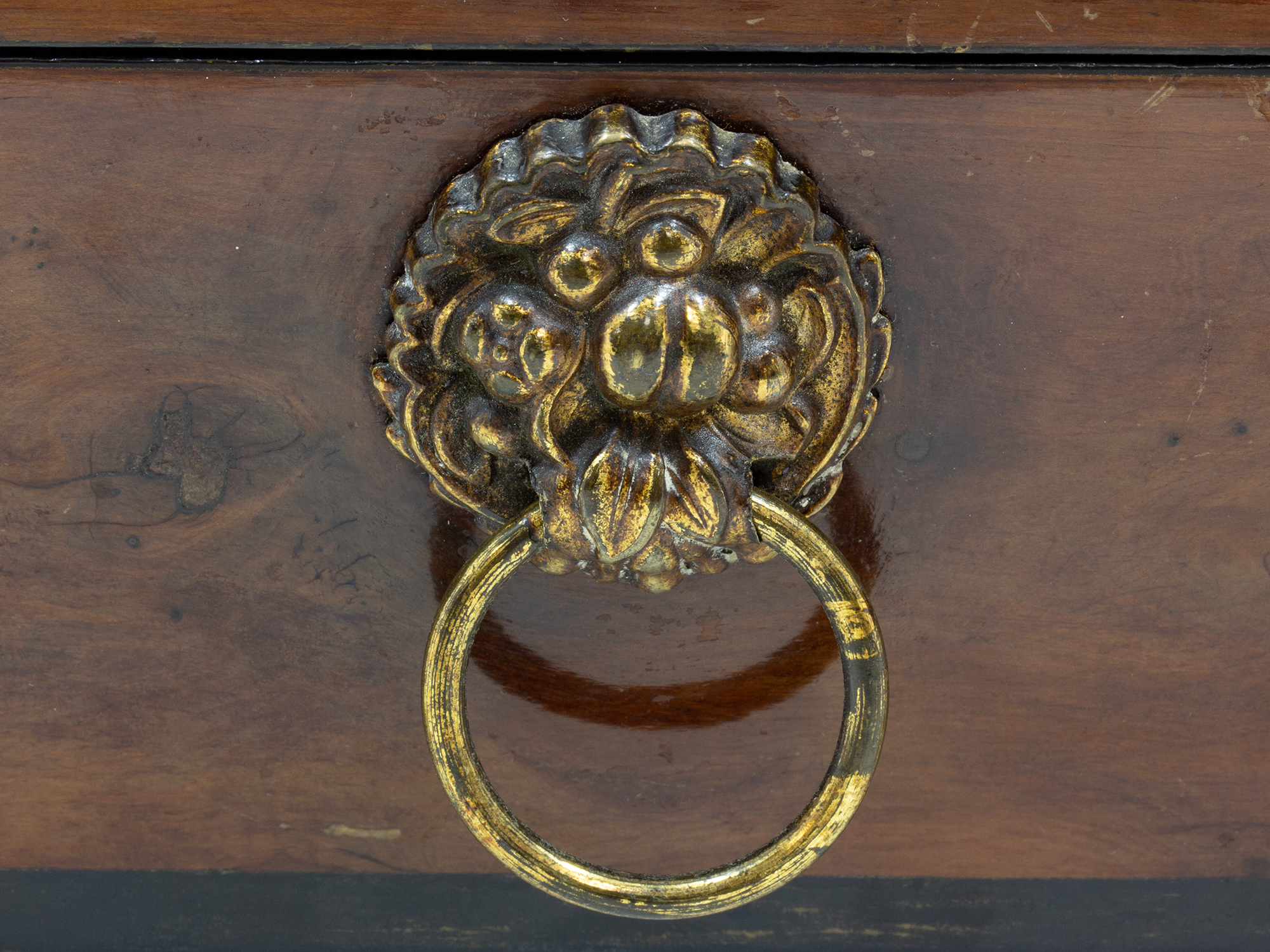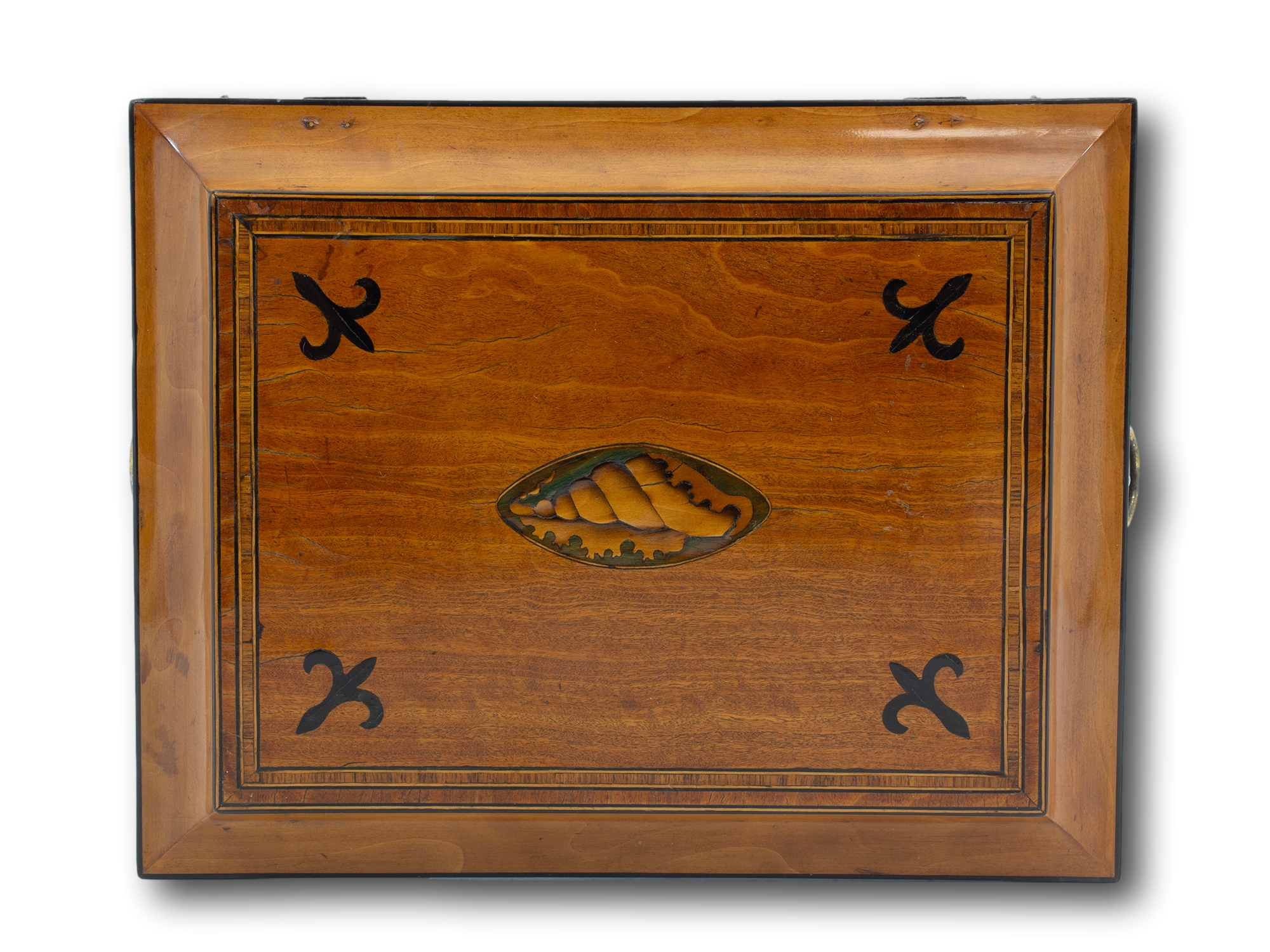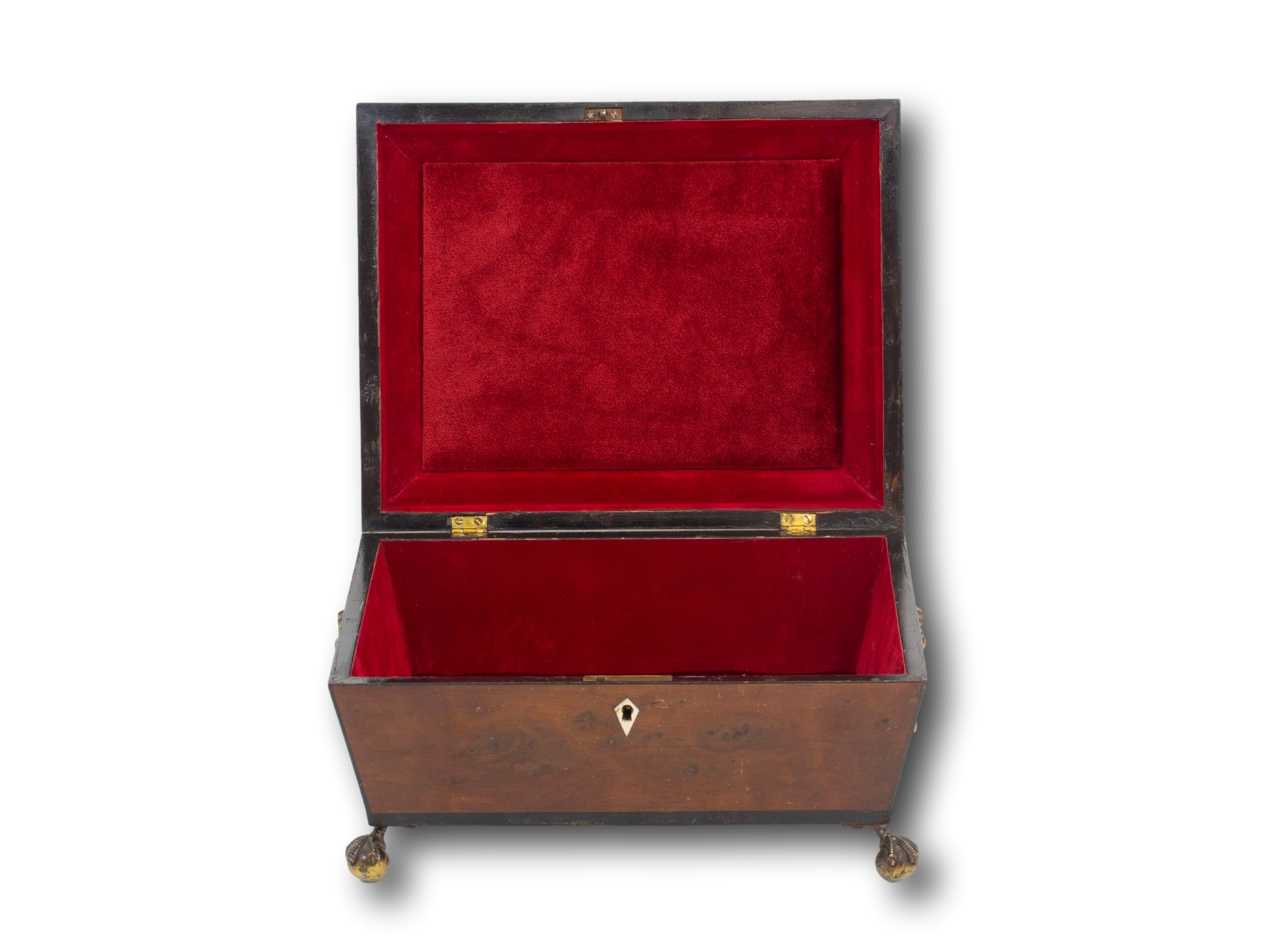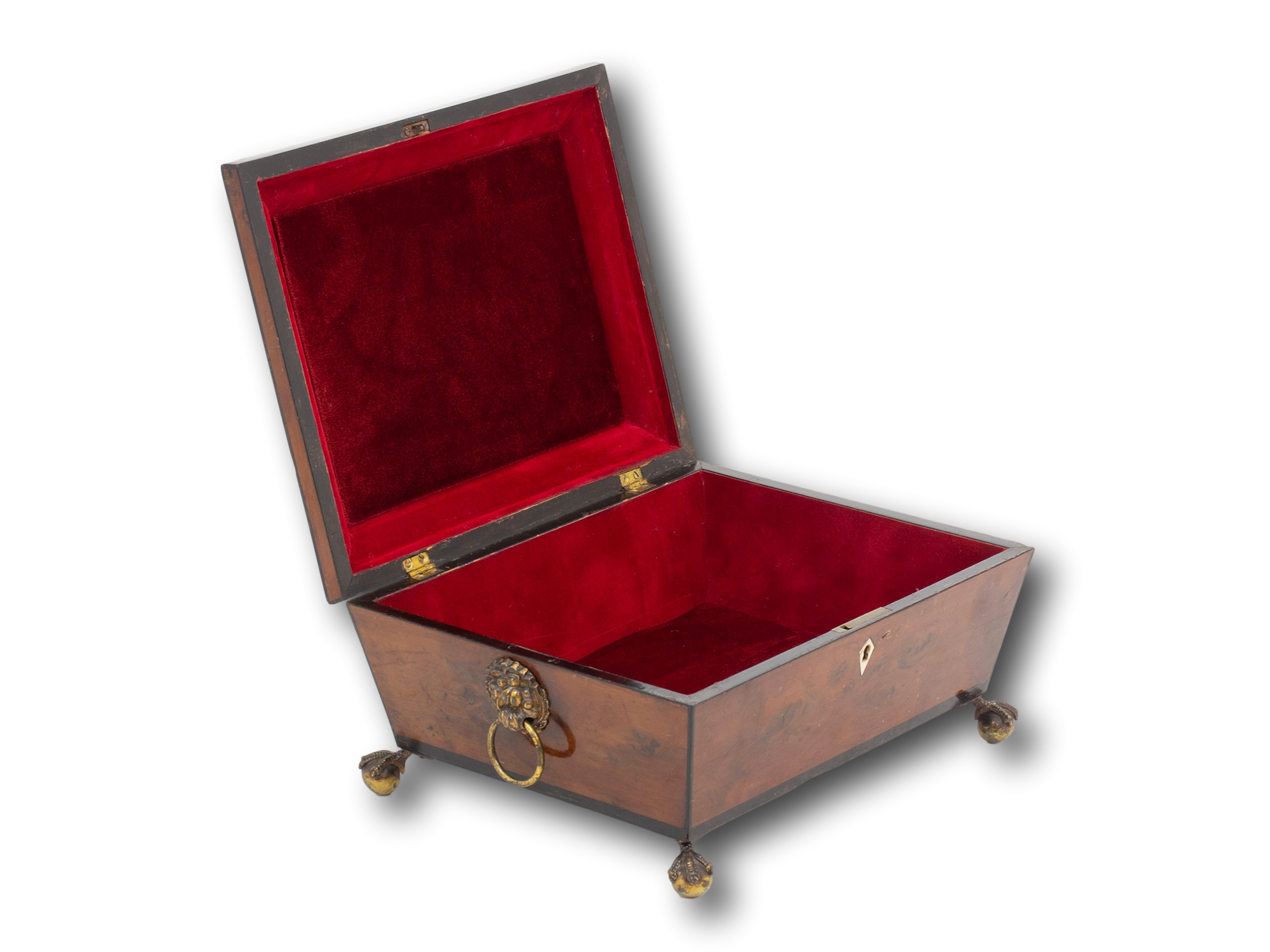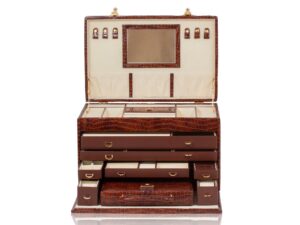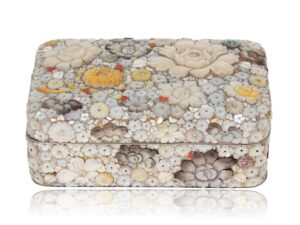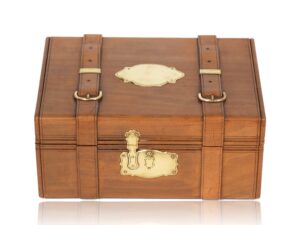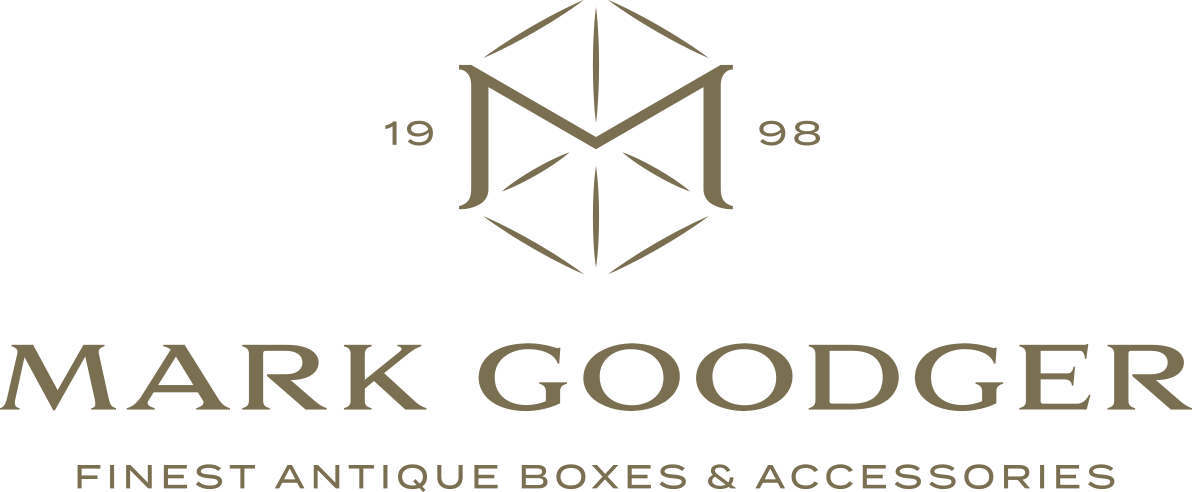George III Satinwood Jewellery Box
SOLD
Conch Shell & Fleur-de-lis Inlay From our Jewellery Box collection, we are delighted to offer this George III Satinwood Jewellery Box. The Jewellery Box of Sarcophagus shape is veneered in Satinwood and Burr Yew raised upon four ball and claw... Read More
Georgian Circa 1800
| Dimensions | 26 × 20.5 × 12.5 cm |
|---|---|
| Country | |
| Medium | |
| Period | |
| Year | |
| Provenance | |
| SKU | 501360-MCEK |
Description
Description
Conch Shell & Fleur-de-lis Inlay
From our Jewellery Box collection, we are delighted to offer this George III Satinwood Jewellery Box. The Jewellery Box of Sarcophagus shape is veneered in Satinwood and Burr Yew raised upon four ball and claw feet with ebony edging. Each side of the Jewellery Box features a gilt loop handle with flowers and fruit. The Jewellery Box exterior is finished with a raised cavetto lid having a central cartouche inlay conch shell surrounded by four Fleur-de-lis, one inlaid to each corner. The inlay to the lid is framed by alternating strips of boxwood, ebony and cross banded veneer. The interior of the Box is lined with a luscious red cushioned velvet with brass hardware and lock plate. The Jewellery Box dates to the turn of the 19th century during the Georgian period and the reign of George III Circa 1800.
The Jewellery Box comes complete with a working lock and a tasselled key.
Ebony is often almost completely black with very little visible grain often with a subtle red/purple hue. This wood is very expensive due to the slow-growing trees which can often be gnarly affecting the yield of straight workable wood. Most ebonies are very dense making work with hand tools very difficult and can quickly clunt cutting tools. This density however offers an excellent finish on turned items.
Satinwood is found in India and Sri Lanka. It has a rich golden colour and an almost reflective sheen. Satinwood is traditionally used for high quality furniture.
Burr Yew originates from Asia, Europe and North Africa. It is yellow-brown to orange-brown and usually conforms to a fine uniform pattern. Yew wood usually has black pips scattered throughout so clean veneers fetch a high price and are reserved for finer items. A few trees will produce a burr which offers a distinct decorative finish.
Boxwood “Buxus sempervirens” can be found in Europe, Northwest Africa and Southwest Asia. It is a light cream that turns darker to brown when exposed to light. The trees are very small meaning it is suited to smaller projects like edging or inlay instead of veneers.
George III was King of Great Britain and Ireland from October 1760 until his death in 1820. It was under the rule of George III that the Acts of Union 1800 unified Great Britain and Ireland into the United Kingdom of Great Britain and Ireland.
Georgian era was a period in British history dating from 1714-1837, known as the Georgian era after the Hanoverian kings George I, George II, George III and George IV.
With every purchase from Mark Goodger Antiques, you will receive our latest catalogue, a Certificate of Authenticity, detailed care instructions for your chosen piece and an independent invoice (for insurance purposes) will be enclosed. As well as being protected by a no-hassle, money-back policy, your piece will be entirely insured during the shipping process to ensure the safety of your item.
Additional information
Additional information
| Dimensions | 26 × 20.5 × 12.5 cm |
|---|---|
| Country | |
| Medium | |
| Period | |
| Year | |
| Provenance | |
| SKU | 501360-MCEK |
